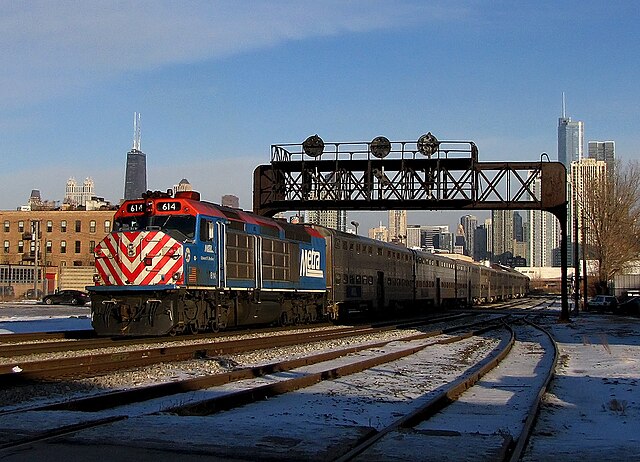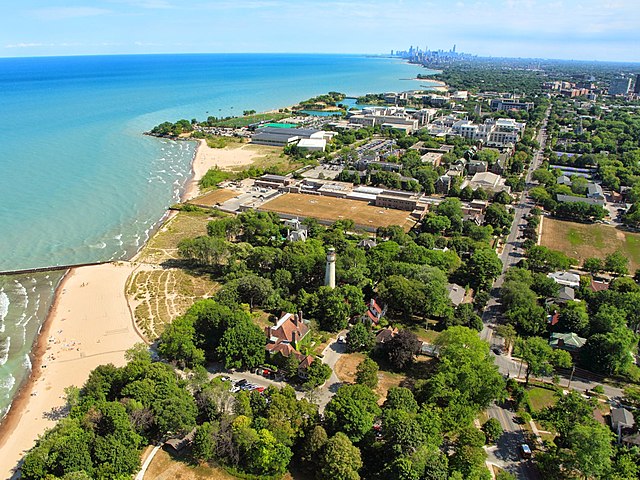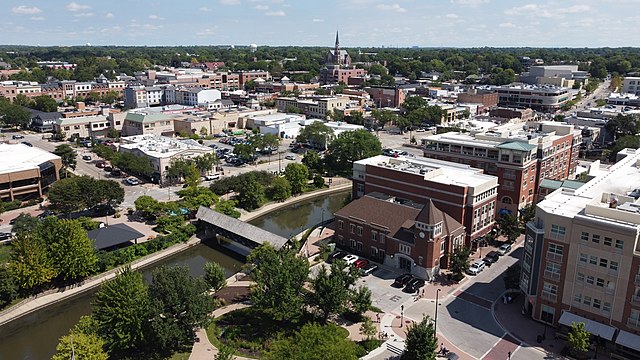Metra is the primary commuter rail system in the Chicago metropolitan area serving the city of Chicago and its surrounding suburbs via the Union Pacific Railroad, BNSF Railway, and other railroads. The system operates 242 stations on 11 rail lines. It is the fourth busiest commuter rail system in the United States by ridership and the largest and busiest commuter rail system outside the New York City metropolitan area. In 2023, the system had a ridership of 31,894,900, or about 152,400 per weekday as of the fourth quarter of 2023. The estimated busiest day for Metra ridership occurred on November 4, 2016—the day of the Chicago Cubs 2016 World Series victory rally.
An outbound North Central Service train approaches Schiller Park station in June 2019, being led by an Ex-Amtrak EMD F59PHI
RTA EMD F40PH No. 123 crossing the Fox River in Elgin, Illinois, in 1981
Metra EMD F40C No. 614 in Chicago
Passengers near an inbound train at Geneva Station
Chicago metropolitan area
The Chicago metropolitan area, also referred to as the Greater Chicago Area and Chicagoland, is the largest metropolitan statistical area in the U.S. state of Illinois, containing the City of Chicago along with its surrounding suburbs and satellite cities. Encompassing 10,286 square mi (28,120 km2), the metropolitan area includes the city of Chicago, its suburbs and hinterland, that span 14 counties across northeast Illinois, northwest Indiana, and southeast Wisconsin. The MSA had a 2020 census population of 9,618,502 and the combined statistical area which spans up to 19 counties had a population of nearly 10 million people. The Chicago area is the third largest metropolitan area in the United States and the fourth largest metropolitan area in North America and the largest within the Midwest, and the largest in the Great Lakes megalopolis. Its urban area is one of the forty largest in the world.
Image: Chicago sunrise 1
Image: Evanston, IL Aerial View
Image: Chicago at Night (28824229986)
Image: Downtown Naperville Aerial








